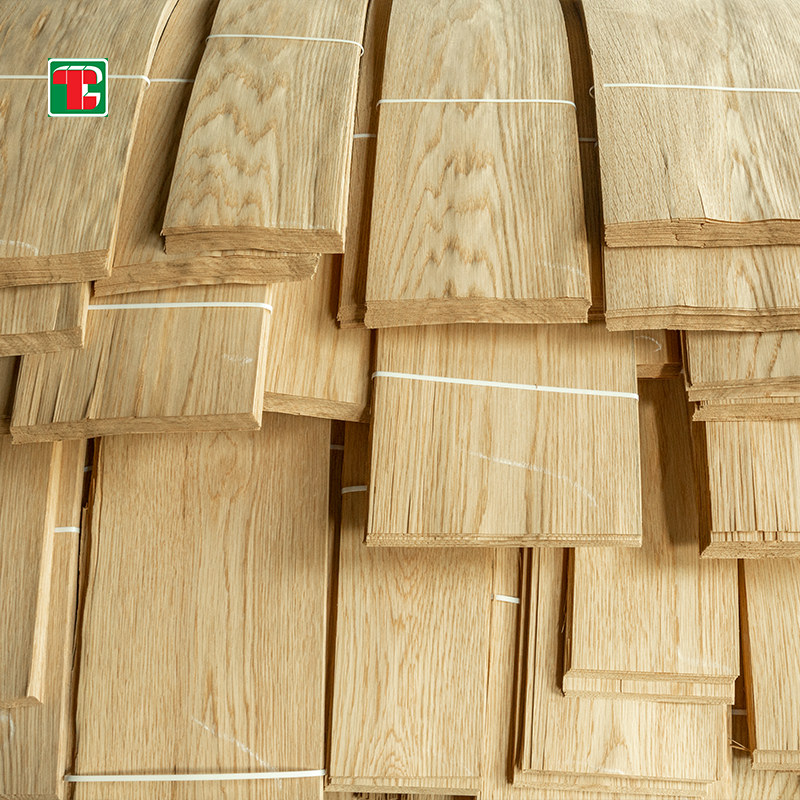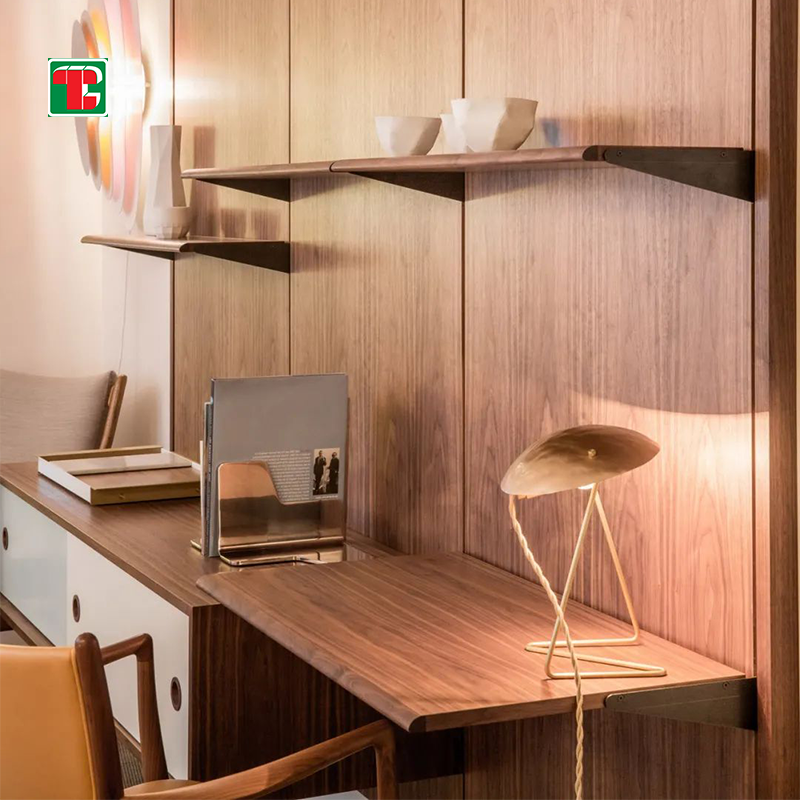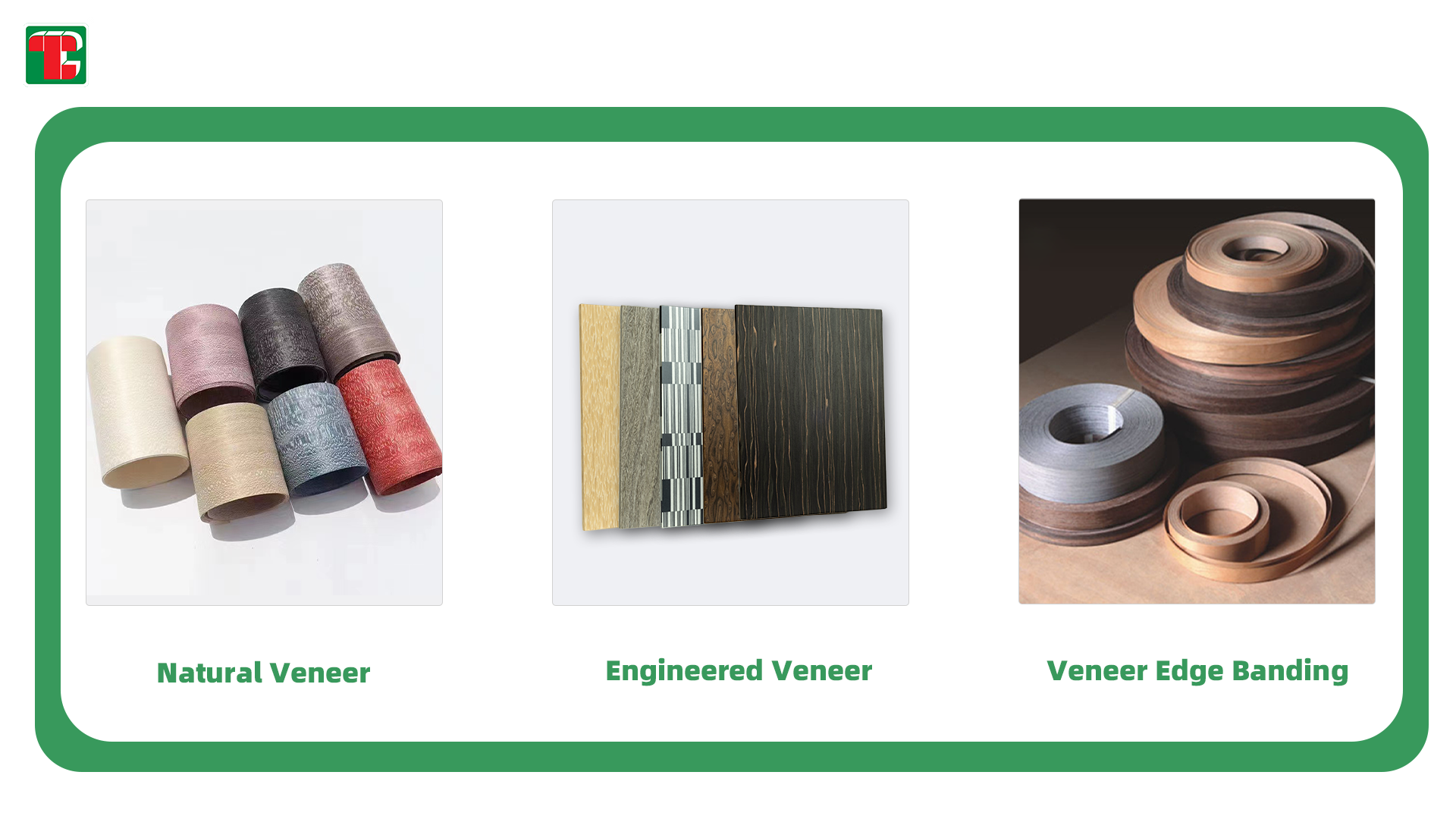I. Introduction: Unveiling the Essence of Wood Veneer Thickness
Wood veneers, these thin slices of natural or engineered wood, have long held a significant place in the world of interior design and woodworking. The allure of wood veneers lies not only in their aesthetic charm but also in their ability to lend warmth and character to any space. When embarking on a project that involves wood veneers, be it a piece of fine furniture, interior paneling, or an architectural masterpiece, one often focuses on the species, color, and grain patterns. However, there's an essential factor that should not be overlooked – the thickness of the veneer.
In this exploration of wood veneers, we delve into the art of making the right choice regarding thickness. The thickness of wood veneers plays a critical role in shaping the outcome of your project, influencing not only the aesthetics but also the functionality and longevity of the end result. As we venture further, we will uncover the nuances of wood veneer thickness, deciphering its impact on various aspects of woodworking and interior design. So, join us on this journey as we highlight the vital importance of wood veneers and introduce the critical role of thickness in the decision-making process.

II. Understanding Wood Veneer Thickness: A Deeper Dive
Factors Influencing Thickness:
The thickness of wood veneers is far from a one-size-fits-all affair. It is influenced by a myriad of factors, making it a versatile and adaptable component in the world of woodworking and interior design. The choice of veneer thickness is often guided by the type of project, the wood species used, and the desired level of durability and aesthetics.
- Wood Species: Different tree species have varying characteristics, impacting the veneer thickness they can achieve. Some species naturally lend themselves to thicker veneers, while others are better suited for thinner applications.
- Production Costs: The cost of manufacturing veneers can also play a significant role in determining their thickness. Thicker veneers often require more material and labor, making them a pricier option compared to their thinner counterparts.
- Custom Preferences: For custom-made items, customer preferences often come into play. In bespoke furniture or specialty projects, the client's vision can lead to the selection of a specific veneer thickness to meet their unique requirements.
Regional and Cultural Variations:
Across the globe, regional and cultural variations further complicate the standardization of wood veneer thickness. Different countries and traditions have established their preferences and practices when it comes to veneers. For example, some regions might favor ultra-thin veneers, like 0.20mm, while boat-building companies in other areas might opt for significantly thicker veneers, up to 2.4mm. These variations reflect the diverse approaches to woodworking and design that have developed over time and have a profound influence on the global veneer market.
Economic Considerations in Furniture Design:
The economic factor plays a pivotal role in determining veneer thickness, especially in the realm of furniture design. When it comes to manufactured furniture, there's a distinct correlation between cost and veneer thickness. Economical furniture often leans towards thinner veneers to keep retail prices competitive, while more luxurious and expensive pieces can accommodate thicker veneers. This dynamic ensures that the market caters to a wide range of consumers, offering both cost-effective solutions and high-end luxury options.
Intriguingly, a reliable 'standard' thickness for many home projects is around 0.6mm, offering a balance of quality and stability against changing environmental conditions. For more construction-oriented applications, veneers can range between 1.5mm to 2.5mm, providing the robustness needed to withstand wear and tear.
As we journey deeper into the world of wood veneers, it becomes clear that thickness is a multifaceted consideration, shaped by diverse factors, including wood species, production costs, custom preferences, regional variations, and economic factors. Understanding these influences empowers us to make well-informed choices, ensuring that the veneer thickness aligns harmoniously with our project's goals and aspirations.
III. Making the Right Choice: Navigating the World of Wood Veneer Thickness
Thickness Recommendations for Home Projects:
Provide practical guidelines for choosing the ideal veneer thickness in various home projects.
Highlight how thickness considerations differ based on the specific needs of furniture, cabinetry, or decorative applications.
Ensuring Stability Against Changing Environments:
Discuss the importance of selecting an appropriate veneer thickness to guarantee stability.
Explore how wood veneers can respond to fluctuations in temperature and humidity, emphasizing the need for thickness to counteract these effects.
How Heat and Moisture Can Affect Veneers:
Examine the potential impact of heat and moisture on wood veneers.
Share insights into how extended exposure to these elements can lead to warping and changes in the appearance of veneered surfaces.
The Need for Protective Finishes:
Stress the role of protective finishes in enhancing the longevity and durability of wood veneers.
Discuss the aesthetic and functional advantages of applying finishes to safeguard against environmental stressors.

IV. Delving into Thick Veneer: Uncovering the Depth of Wood Veneer Thickness
Thickness Recommendations for Home Projects:
When embarking on an interior design project at home or considering veneers for a woodworking endeavor, the thickness of the veneer is a pivotal decision. For many home projects, a thickness of approximately 0.6mm serves as a reliable standard. This thickness strikes a balance between quality and stability, making it an ideal choice for various applications. Whether you're planning to enhance your furniture, cabinetry, or wall paneling, a 0.6mm veneer provides the structural integrity and visual appeal needed to transform your living space.
However, it's important to bear in mind that this thickness pertains to the veneer's individual layer. In practice, you'll often need to double your calculation to account for both the top and bottom veneers when considering your project's overall thickness. This comprehensive approach ensures that the final result meets your expectations.
Ensuring Stability Against Changing Environments:
Wood veneers, like any other wood-based material, are susceptible to environmental influences. These veneers, which often start their journey as tree logs, encounter significant changes in temperature and humidity as they progress from their natural habitat to our interior environments. As such, they can be affected by heat and moisture, potentially causing them to expand or contract.
In most cases, these changes are subtle and inconspicuous, having minimal impact on the finished product. However, when wood veneers are exposed to excessive amounts of moisture or heat, they may warp and change shape. To safeguard your investment, avoid placing wood items too near or directly facing radiant heat sources for extended periods.
The Impact of Heat and Moisture on Veneers:
Heat and moisture can have a noticeable impact on the stability and appearance of wood veneers. When exposed to excessive humidity, veneers can absorb moisture, causing them to expand. Conversely, in dry and hot environments, the moisture content decreases, leading to contraction.
In cases where these changes are substantial, veneers can warp, creating uneven surfaces and compromising their aesthetics. Therefore, it's advisable to select the right veneer thickness and type for the specific environmental conditions your project will encounter. Thicker veneers, ranging from 1.5mm to 2.5mm, are often preferred for applications that require additional durability and resistance against environmental fluctuations.
The Need for Protective Finishes:
To enhance the longevity and aesthetics of wood veneers, applying a protective finish is highly recommended. A finish not only provides a layer of protection against external factors like moisture and heat but also enhances the visual appeal of the veneer.
Finishes can come in various forms, including varnishes, lacquers, and oils, each with its own set of advantages. By applying a finish, you not only safeguard the veneer from the negative effects of environmental changes but also add an attractive luster and depth to the wood's natural beauty.
In summary, making the right choice when it comes to wood veneer thickness is a multifaceted process. It involves selecting the appropriate thickness for your home project, ensuring stability in ever-changing environments, understanding the impact of heat and moisture, and recognizing the importance of protective finishes. By considering these factors and tailoring your veneer choice to your project's specific requirements, you can achieve stunning, long-lasting results that stand the test of time.
IV. Exploring Thick Veneer Defined:
Thick veneer, a term often associated with wood veneers, is the sheet of veneer with a thickness exceeding the standard veneer thicknesses of 0.4mm, 0.5mm, 0.55mm, or 0.6mm. This departure from the conventional thickness introduces a realm of possibilities and applications in the world of woodworking and interior design.
The thickness of thick veneers can range from 0.8mm to substantial measurements like 1.0mm, 1.5mm, 2mm, 3mm, and even 4mm. This broad spectrum of thicknesses allows for an extensive array of creative choices, making thick veneer a valuable resource for those seeking distinctive, robust, and expressive veneer solutions.
Popular Thick Wood Veneer Species:
Thick veneers are not limited to a single wood species; they encompass a diverse range of wood types, each offering its unique characteristics and aesthetics. Among the popular thick wood species, you will find Oak, Walnut, Sapele, Teak, Cherry, Maple, and even Bamboo. These woods, with their inherent beauty and strength, serve as the foundation for a wide range of design possibilities.
The Versatility of Engineered Wood Veneer:
In the world of thick veneer, engineered wood emerges as a versatile and cost-effective option. Engineered veneer, a synthetic alternative to traditional wood veneer, provides a broader spectrum of colors and patterns, making it a popular choice for those looking to replicate the look of exotic wood species. Additionally, engineered veneer comes in standard sheet sizes that can reach up to 2500mm in length and 640mm in width, providing ample material for large-scale projects. By slicing engineered veneer, you can achieve a 1mm or 2mm thickness veneer sheet, expanding the design possibilities in woodworking and interior cladding.
Notably, thick engineered oak veneer and walnut veneer are among the most sought-after species for their versatility and cost-effectiveness. These engineered veneers offer consistent quality and a wide range of options for designers and woodworkers.
For unique design requirements, 0.7mm rough-sawn cut engineered veneer serves as a favorite for interior wall cladding decoration, adding depth and character to any space.
Thick Veneer Edge Banding:
While veneer edge banding typically comes in standard thicknesses of 0.3mm, 0.45mm, or 0.5mm, the demand for special thick veneer edge banding is on the rise. These thicker edge banding rolls, including 1mm, 2mm, and even 3mm wood edge banding, offer a distinctive look that sets them apart.
These special thick wood edge banding rolls are often comprised of multiple layers of standard natural veneers. For example, a 1.2mm thick walnut veneer edge banding could consist of 3 layers of 0.4mm standard walnut veneer. This layering technique allows for the creation of edge banding rolls in various thicknesses, providing designers and woodworkers with a broad spectrum of design choices.
In some unique cases, burl veneer edge banding or end grain veneer edge banding rolls might incorporate a thick reconstituted veneer in the bottom layers, creating an exquisite fusion of natural and engineered materials.
As we delve into the realm of thick veneer, we uncover a world of possibilities, from a diverse selection of wood species to the versatility of engineered veneer and the allure of thick veneer edge banding. Thick veneer opens doors to creativity and innovation, allowing designers and woodworkers to bring their unique visions to life with robust and expressive veneer solutions.

VII.Conclusion: Crafting Your Veneer Tale
As we conclude our voyage through the intricate world of wood veneers, we've charted the course to making informed choices:
- We've underscored the essence of wood veneers in shaping construction and design, illuminating their timeless appeal and diverse utility.
- We've unraveled the often-overlooked but pivotal dimension of thickness in the realm of veneers, showcasing its profound influence on the interplay between aesthetics and functionality.
Now, armed with knowledge, you stand ready to embark on your own veneer adventures. Your projects, your designs, and your creations will become a testament to the art of choosing veneer thickness and types. May your journey be filled with inspiration, innovation, and the harmonious balance of beauty and practicality in every veneered masterpiece you craft.
Post time: Nov-07-2023







